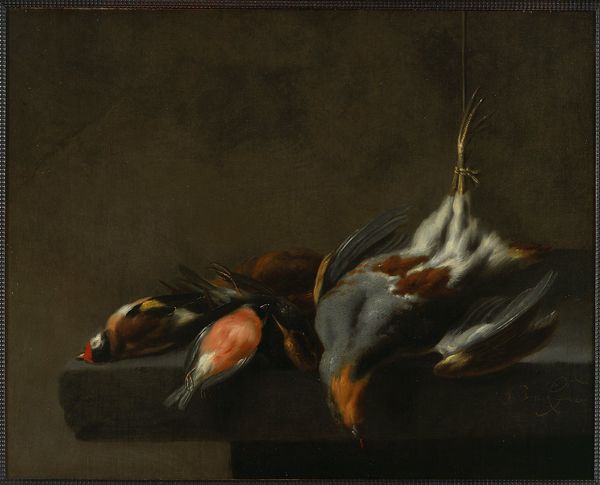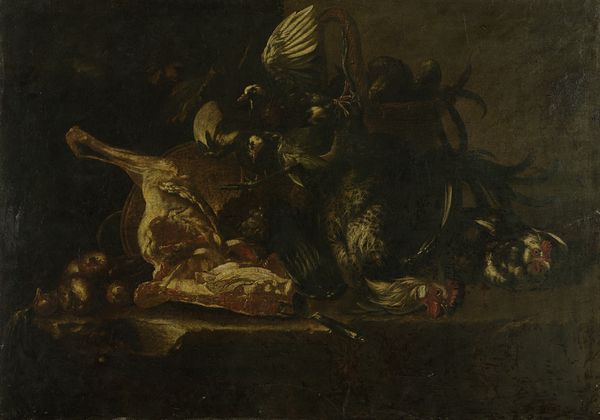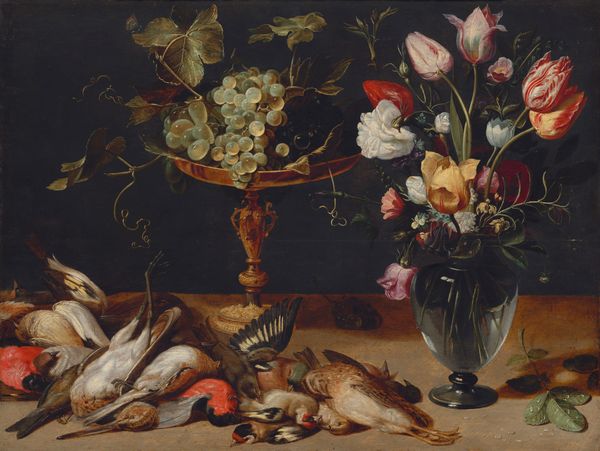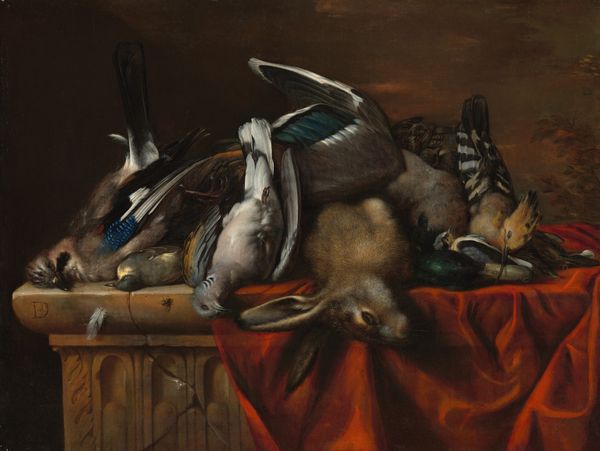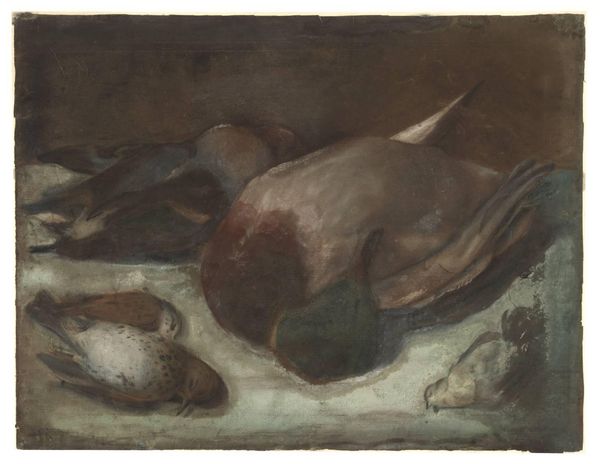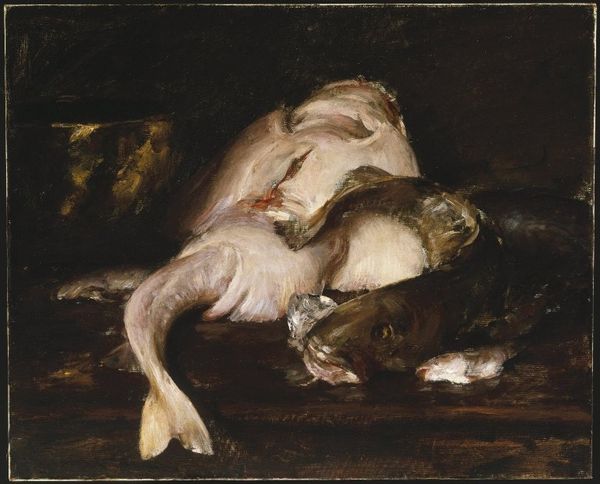
oil-paint
#
baroque
#
oil-paint
#
oil painting
#
genre-painting
Dimensions: 52 cm (height) x 67.5 cm (width) (Netto)
Curator: Here we have “Wildfowl on a Wooden Table,” an oil painting created sometime between 1648 and 1681 by an anonymous artist. Editor: My first impression is a muted still life. There’s something melancholic about the composition, the way the birds are piled, their feathers subtly illuminated against that dark background. It feels very staged. Curator: Yes, the arrangement speaks volumes. Looking at the technical aspect, consider the layering of the paint and how it brings depth and texture to the plumage. Notice the plain wooden table. It emphasizes the materiality and perhaps serves as commentary on social consumption during the Baroque era. Was this excess acceptable? What was the labor involved in the hunting and preparation? Editor: Beyond mere sustenance, these dead fowl transcend a culinary status. The image taps into complex cultural layers. Consider the symbolic weight of birds as emblems of freedom and the soul. Their confinement and stillness, arranged so deliberately, evoke mortality and the transience of earthly pleasures. Do we interpret them as simply decor for the dining table? Are we reflecting on wealth? Is it vanitas, or perhaps something darker? Curator: It makes you think, doesn't it? Looking at the different types of birds included suggests the skills and access of the hunter. It raises questions about resources, their management, and social status. Editor: Definitely. Moreover, there’s the stark contrast between their delicate beauty and their lifelessness. The image confronts us with the inherent tension between attraction and repulsion, so typical of that period. It makes the viewer consider the fragility of beauty, like the plucked rose so prevalent in Dutch still-life paintings. Curator: Exactly, the painting engages with our awareness of materiality in a way we might overlook today, now that it’s safely preserved in the Statens Museum for Kunst in Copenhagen. Its creation was an artisanal, perhaps collaborative, effort, reflective of societal standards. Editor: The visual vocabulary of the painting speaks volumes about cultural memory. Looking closely helps reveal a web of interwoven symbolic threads concerning beauty, death, and morality. Curator: Examining the techniques involved and thinking about societal structure invites speculation. Hopefully, our analysis can inspire further discussion about process, making, and consumption. Editor: Hopefully. We've had a fascinating discussion.
Comments
No comments
Be the first to comment and join the conversation on the ultimate creative platform.
